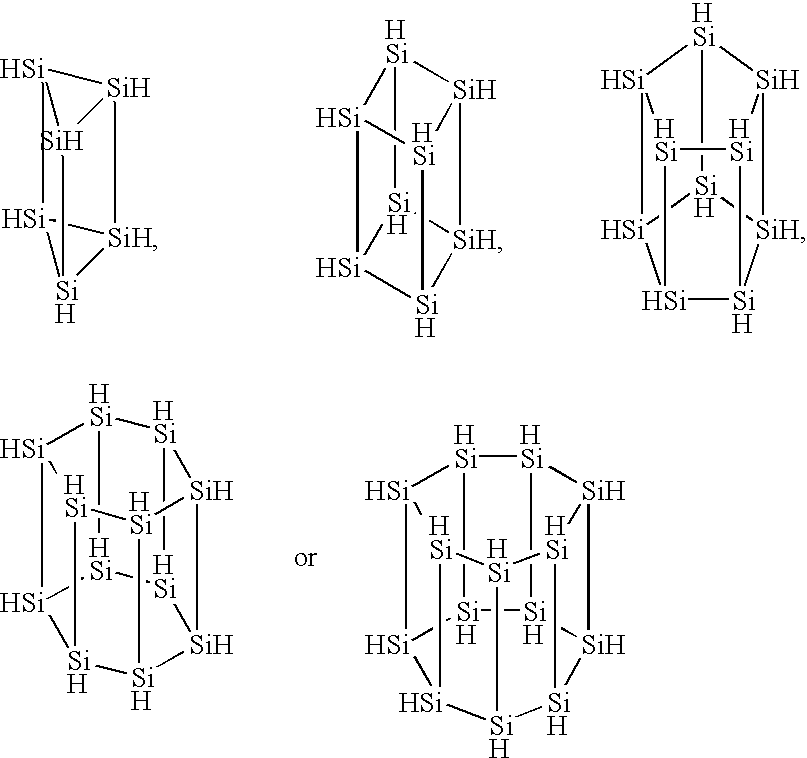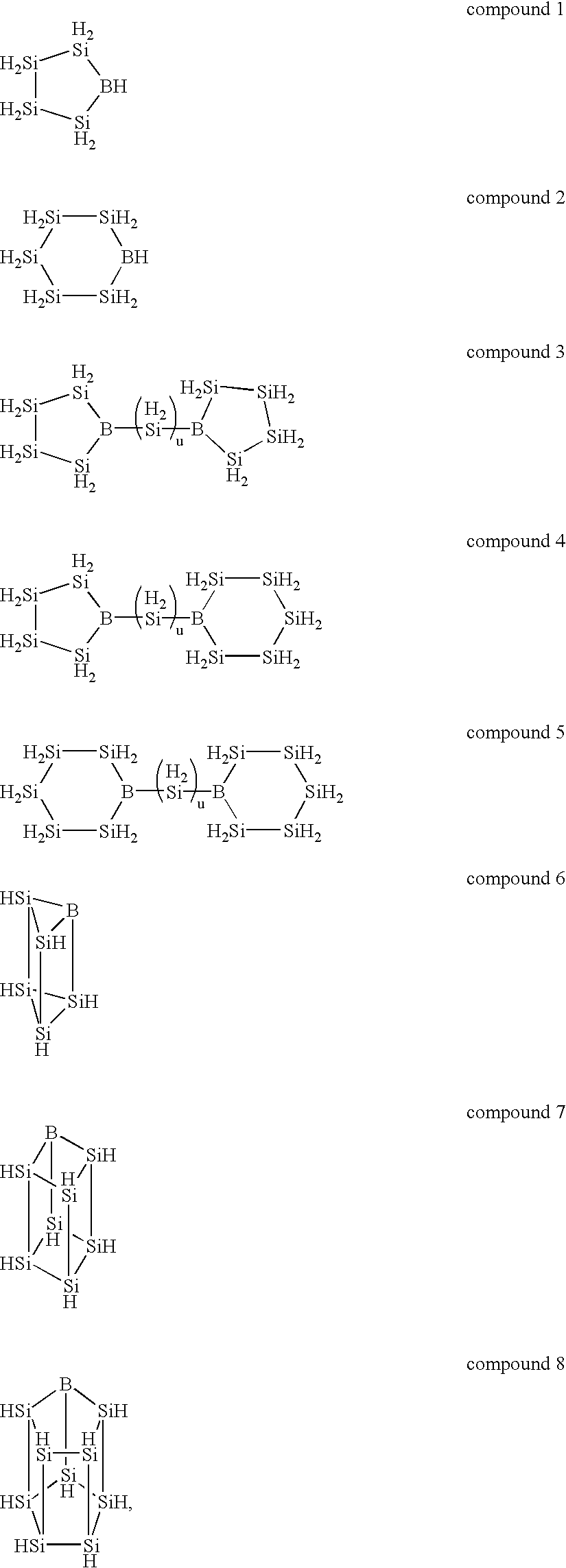Coating composition
- Summary
- Abstract
- Description
- Claims
- Application Information
AI Technical Summary
Benefits of technology
Problems solved by technology
Method used
Image
Examples
synthesis example 1
The inside of a 3-liter four-neck flask equipped with a thermometer, a condenser, a dropping funnel and an agitator was substituted with an argon gas, 2 liters of dried tetrahydrofuran and 75 g of metal lithium were charged into the flask, and the content of the flask was bubbled with an 20 argon gas. While this suspension was agitated at 0.degree. C., 500 g of phenyltrichlorosilane was added through the dropping funnel. The reaction was continued at 0.degree. C. until the metal lithium completely disappeared and, thereafter, the content of the flask was further agitated at room temperature 12 hours. The dark-brown reaction mixture was poured into ice water to precipitate the reaction product. This precipitate was separated by filtration, washed fully with water and vacuum dried to give 210 g of a light-yellow polycyclic silicon compound containing a phenyl group.
A hundred fifty grams of the phenyl group-containing polycyclic silicon compound obtained by the above reaction was cause...
synthesis example 2
In the same manner of Synthesis Example 1, the inside of a 3-liter four-neck flask equipped with a thermometer, a condenser, a dropping funnel and an agitator was substituted with an argon gas, 2 liters of dried tetrahydrofuran and 63 g of metal lithium were charged into the flask, and the content of the flask was bubbled with an argon gas. While this suspension was agitated at -30.degree. C., a mixture of 253 g of diphenyldichlorosilane and 170 g of tetrachlorosilane was added through the dropping funnel. The reaction was continued until the metal lithium completely disappeared. Thereafter, the filtrate obtained by separating the unreacted lithium by filtration was poured into ice water to precipitate the reaction product. This precipitate was separated by filtration, washed fully with water and vacuum dried to give 210 g of a phenyl group-containing polycyclic silicon compound.
Two hundred and ten grams of the phenyl group-containing polycyclic silicon compound obtained from the ab...
example 1
A solution was prepared by dissolving 10 g of the hydrogenated polycyclic silicon compound obtained in Synthesis Example 1 in 10 ml of toluene. This solution was spin-coated on a substrate at 1,500 rpm in an argon atmosphere, and the solvent was removed at 100.degree. C. to form a coating film of the hydrogenated polycyclic silicon compound. Then, when this coating film was subjected to heat treatment at 500.degree. C. for 30 minutes in an argon atmosphere, it was converted into a silicon film having metal gloss. When the Raman spectrum of this silicon film was measured, it was 100% amorphous. The measured Raman spectrum is shown in FIG. 2.
PUM
| Property | Measurement | Unit |
|---|---|---|
| Composition | aaaaa | aaaaa |
| Area | aaaaa | aaaaa |
Abstract
Description
Claims
Application Information
 Login to View More
Login to View More - R&D
- Intellectual Property
- Life Sciences
- Materials
- Tech Scout
- Unparalleled Data Quality
- Higher Quality Content
- 60% Fewer Hallucinations
Browse by: Latest US Patents, China's latest patents, Technical Efficacy Thesaurus, Application Domain, Technology Topic, Popular Technical Reports.
© 2025 PatSnap. All rights reserved.Legal|Privacy policy|Modern Slavery Act Transparency Statement|Sitemap|About US| Contact US: help@patsnap.com



